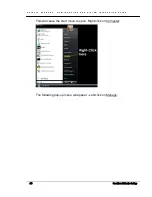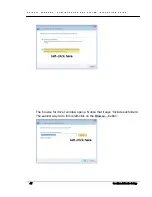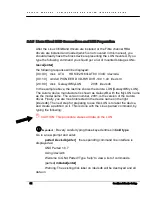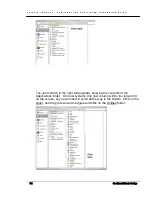
G A L A X Y ® A U R O U R A C O N F I G U R A T I O N A N D S Y S T E M I N T E G R A T I O N G U I D E
52
Section 2 Basic Setup
this disk will be lost. Do you want to continue?
Yes/No?
Yes[enter]
New disk label type? [gpt]?
gpt[enter]
(parted)
mkpart[enter]
Partition name? []?
mypart[enter]
File system type? [ext2]?
ext3[enter]
Start?
0[enter]
End?
-1[enter]
(parted)
quit[enter]
In the example above, the /dev/sdb typed after the parted command specifies
the device to partition as seen from the lsscsi command. When entering the
make a label command [mklabel], it gives a warning about an existing label –
you may or may not get this warning – this is not an error. A label is basically a
data element which is written to the device on it’s outer-most sector, which
describes very generally how it is going to be used. The main options are mbr
and gpt. mbr is for devices which are 2TB in capacity or less. gpt is for any
size device – it can also be used for devices which are 2TB in capacity or less.
When creating the partition, the name “mypart” was given. The partition name
really isn’t used outside of parted itself, so it doesn’t really matter what you
name it, but it does have to have a name, preferably unique. Also the file
system chosen for this example was ext3. Other file systems may be used on
your client – some offer features that others do not have and vice-versa.
Because this is showing up as a block device on the client, the array itself
doesn’t have to support the file system being used. The ‘Start? ‘ entry of ‘0’
indicates the starting sector number is 0. The ‘End?’ entry of “-1” indicates that
the end of the partition is on the last sector. It’s possible to have multiple
partitions, but for this example, the entire LUN is used. Consult with tech
support for partition size options. In this case you have created partition 1 but
still need to create a file system on it.
The file system has to be created on that partition. The device in the example
is /dev/sdb, however the partition is specified by typing the partition number
after the device – in this case /dev/sdb1. In the example, the ext3 file system
was specified. The command to create the file system has to match the file
system selected during ‘parted’. To create the ext3 file system now on partition
/dev/sdb1, ‘make file system’ [mkfs] command is used . type the following:
mkfs.ext3 /dev/sdb1[enter]
mke2fs 1.40.2 (12-Jul-2007)
Filesystem label=
OS type: Linux






























